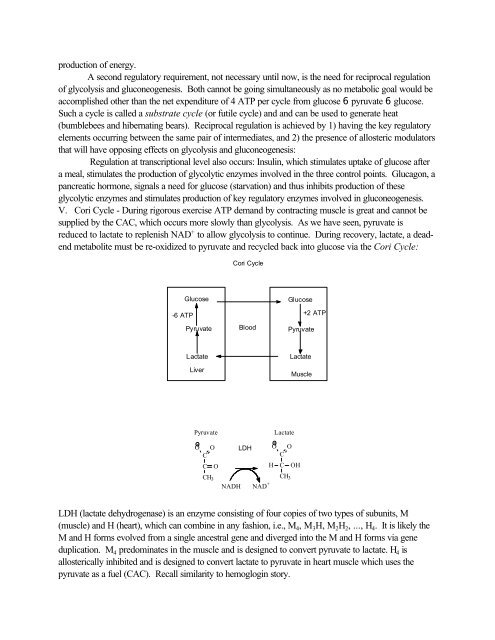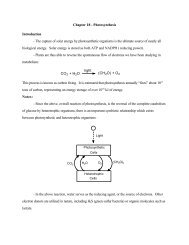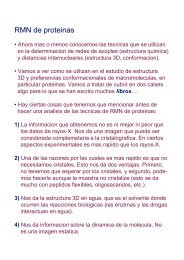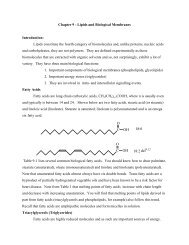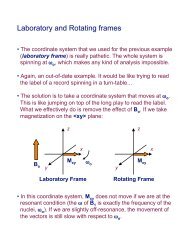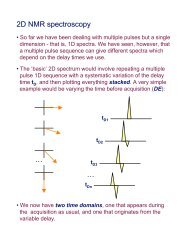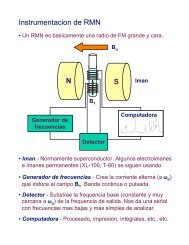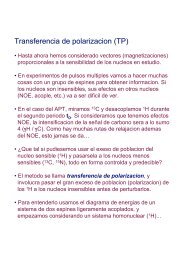Chapter16 - Glycolysis and Gluconeogenesis Topics you're not ...
Chapter16 - Glycolysis and Gluconeogenesis Topics you're not ...
Chapter16 - Glycolysis and Gluconeogenesis Topics you're not ...
You also want an ePaper? Increase the reach of your titles
YUMPU automatically turns print PDFs into web optimized ePapers that Google loves.
production of energy.A second regulatory requirement, <strong>not</strong> necessary until now, is the need for reciprocal regulationof glycolysis <strong>and</strong> gluconeogenesis. Both can<strong>not</strong> be going simultaneously as no metabolic goal would beaccomplished other than the net expenditure of 4 ATP per cycle from glucose 6 pyruvate 6 glucose.Such a cycle is called a substrate cycle (or futile cycle) <strong>and</strong> <strong>and</strong> can be used to generate heat(bumblebees <strong>and</strong> hibernating bears). Reciprocal regulation is achieved by 1) having the key regulatoryelements occurring between the same pair of intermediates, <strong>and</strong> 2) the presence of allosteric modulatorsthat will have opposing effects on glycolysis <strong>and</strong> gluconeogenesis:Regulation at transcriptional level also occurs: Insulin, which stimulates uptake of glucose aftera meal, stimulates the production of glycolytic enzymes involved in the three control points. Glucagon, apancreatic hormone, signals a need for glucose (starvation) <strong>and</strong> thus inhibits production of theseglycolytic enzymes <strong>and</strong> stimulates production of key regulatory enzymes involved in gluconeogenesis.V. Cori Cycle - During rigorous exercise ATP dem<strong>and</strong> by contracting muscle is great <strong>and</strong> can<strong>not</strong> besupplied by the CAC, which occurs more slowly than glycolysis. As we have seen, pyruvate isreduced to lactate to replenish NAD + to allow glycolysis to continue. During recovery, lactate, a deadendmetabolite must be re-oxidized to pyruvate <strong>and</strong> recycled back into glucose via the Cori Cycle:Cori CycleGlucoseGlucose-6 ATP +2 ATPPyruvate Blood PyruvateLactateLiverLactateMusclePyruvateLactateO O LDH O OCCC OH C OHCH 3CH 3NADH NAD +LDH (lactate dehydrogenase) is an enzyme consisting of four copies of two types of subunits, M(muscle) <strong>and</strong> H (heart), which can combine in any fashion, i.e., M 4 , M 3 H, M 2 H 2 , ..., H 4 . It is likely theM <strong>and</strong> H forms evolved from a single ancestral gene <strong>and</strong> diverged into the M <strong>and</strong> H forms via geneduplication. M 4 predominates in the muscle <strong>and</strong> is designed to convert pyruvate to lactate. H 4 isallosterically inhibited <strong>and</strong> is designed to convert lactate to pyruvate in heart muscle which uses thepyruvate as a fuel (CAC). Recall similarity to hemoglogin story.


